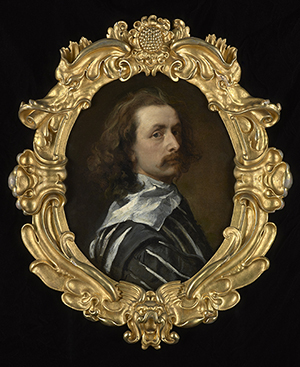
LONDON – The National Portrait Gallery and Art Fund’s fundraising campaign to help the gallery acquire Van Dyck’s last Self-portrait (1640-1) has been successful thanks to a major grant of £6,343,500 from the Heritage Lottery Fund.
This substantial support follows the success of a public appeal involving 10,000 individuals donating over £1.44 million in addition to £1.2 million from two generous private trusts and £1.35 million from the Art Fund and National Portrait Gallery’s funds.
In total, £10 million has been raised to purchase the portrait, and a further £343,000 to support a national tour of the painting (including £150,000 from the Art Fund). The extraordinary generosity of so many individuals and trusts makes this one of the most successful campaigns for a work of art of the last 100 years.
The portrait will remain on display at the gallery until Aug. 31 before research and conservation work are undertaken. The painting will embark on a nationwide tour to six museums and galleries from January 2015.
The Save Van Dyck campaign originally needed to raise £12.5 million to prevent the work from going overseas, but once the application for an export licence was withdrawn in March 2014, and a revised price of £10 million was agreed, there was an improved chance of ensuring that the portrait remained on public display forever.
The portrait will embark on a three-year nationwide tour starting at Turner Contemporary, Margate before going on to Manchester Art Gallery, Dulwich Picture Gallery, Birmingham Museum & Art Gallery, Laing Art Gallery, Newcastle-upon-Tyne and The Scottish National Portrait Gallery, Edinburgh.
The campaign began with an initial £1.2 million raised from the gallery and the Art Fund including a grant of £500,000 towards the acquisition from the Art Fund (with an additional £150,000 offered toward a nationwide tour of the painting) and £700,000 from the gallery’s Portrait Fund and acquisition budget.
Since then there has been a pledge of £1 million from The Monument Trust (the largest single gift to the campaign prior to the Heritage Lottery Fund grant) and a six-figure pledge from the Garfield Weston Foundation, The campaign has also received multiple five-figure gifts from an anonymous American supporter, who has significantly boosted funds at each crucial stage of the campaign.
Van Dyck’s exceptional Self-portrait (1640-1) has been in British private collections for nearly 400 years but was sold to a private collector who wished to take it abroad. The National Portrait Gallery was given an initial three months to acquire the painting, priced at £12.5 million, following a temporary Government export bar (issued on Nov. 14, 2013) to prevent it from being taken overseas. That export bar expired on Feb. 14 and was extended to July 13 before the buyer withdrew and the export bar was halted on March 26.
Sir Anthony Van Dyck’s last self-portrait is a work of huge international importance. It presents an intimate image of an artist at work, apparently in the act of painting, his arm raised in the process of applying paint to a canvas just out of sight. For today’s viewer, it conveys a sense of direct engagement with the artist as an individual, despite the passage of almost 400 years.
Born in Antwerp in 1599, Van Dyck was an artistic prodigy who worked as an assistant to Peter Paul Rubens. He came to Britain in 1632 at the invitation of King Charles I, making London his home until his death in 1641. Charles I was Van Dyck’s most famous patron, rewarding him with a knighthood and the title of Principal Painter. Van Dyck established himself at the heart of the English court, producing magnificent portraits of the royal family and many courtiers. However, beneath the shimmering surface of the court was a sense of growing unease. The late 1630s were a time of political upheaval and by the end of 1642 civil war had broken out in Scotland and England. Within a year of producing this portrait Van Dyck was dead, buried in Old St Paul’s Cathedral with the epitaph: “Anthony Van Dyck – who, while he lived, gave to many immortal life.”


